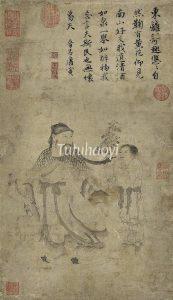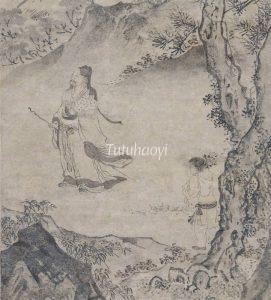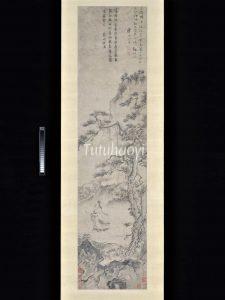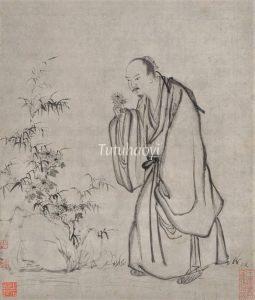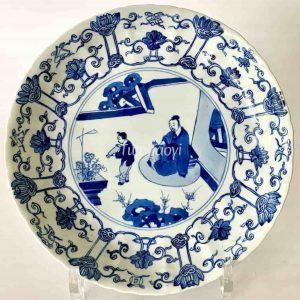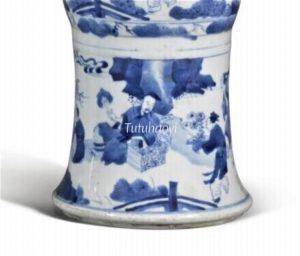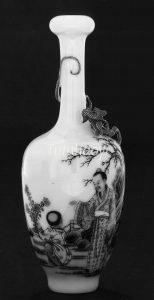Tao Yuanming Appreciating Chrysanthemums
陶渊明爱菊
© Tutuhaoyi.com owns the copyright of the description content for the images attached. Quoting all or part of the description content on this page is permitted ONLY IF ‘Tutuhaoyi.com’ is clearly acknowledged anywhere your quote is produced unless stated otherwise. (本页描述内容版权归Tutuhaoyi.com所有,转发或引用需注明 “Tutuhaoyi.com”, 侵权必究, 已注开源信息的条目除外。)
Tao Yuanming (陶渊明, 365–427), also known as Tao Qian 陶潜, the paragon of ‘Fields and Gardens poetry’, spent most of his life as a hermit in a cottage in the countryside, reading, drinking wine, and writing poetry in an unmannered style. He had a unique eye for the beauty and serenity of the natural world close at hand. Often simple and direct, Tao reflected in his poems on the pleasures and difficulties of rural life and his disdain of the officious hierarchy. The essence of Tao as a literary and spiritual figure is usually represented by an image of him appreciating chrysanthemums in a landscape as well as his famous couplet:
“I pluck chrysanthemums under the eastern hedge,
Then gaze long at the southern mountain range.”
(采菊东篱下,悠然见南山)
Fig 1: lacquer box, Yuan dynasty (1271–1368), courtesy of Shanghai Museum, China
Fig 2: ‘Plucking Chrysanthemums’ 采菊图, hanging scroll, ink on paper, Tang Yin (1470–1524), Ming dynasty (1368–1644), courtesy of the National Palace Museum, Taipei
Fig 3-4: ‘Tao Yuanming enjoying chrysanthemums’ 陶渊明爱菊图, hanging scroll, ink on paper, Du Jin (杜堇, active ca. 1465–1509), Ming dynasty (1368–1644), courtesy of the Metropolitan Museum of Art, New York
Fig 5-6: ‘Looking for Chrysanthemums’ 觅菊图, hanging scroll, ink on paper, after Zhang Feng (仿张风, active ca. 1628–62), 1658, courtesy of the Metropolitan Museum of Art, New York
Fig 7: porcelain dish, Kangxi period (1662–1722), Qing dynasty, courtesy of FENG-CHUN MA Chinese & Japanese Art Consultancy
Fig 8: blue-and-white beaker vase (detail), Kangxi period (1662–1722), Qing dynasty, courtesy of Sotheby’s Auction House London, 12 May 2021, Lot 50
Fig 9: porcelain dish, Yongzheng period (1723–35), Qing dynasty, courtesy of the Victoria & Albert Museum, London
Fig 10: bamboo statuette, Qing dynasty (1644–1911), courtesy of Jiading Museum, China
Fig 11: porcelain vase, 1916, courtesy of the Museum of Fine Arts, Boston

